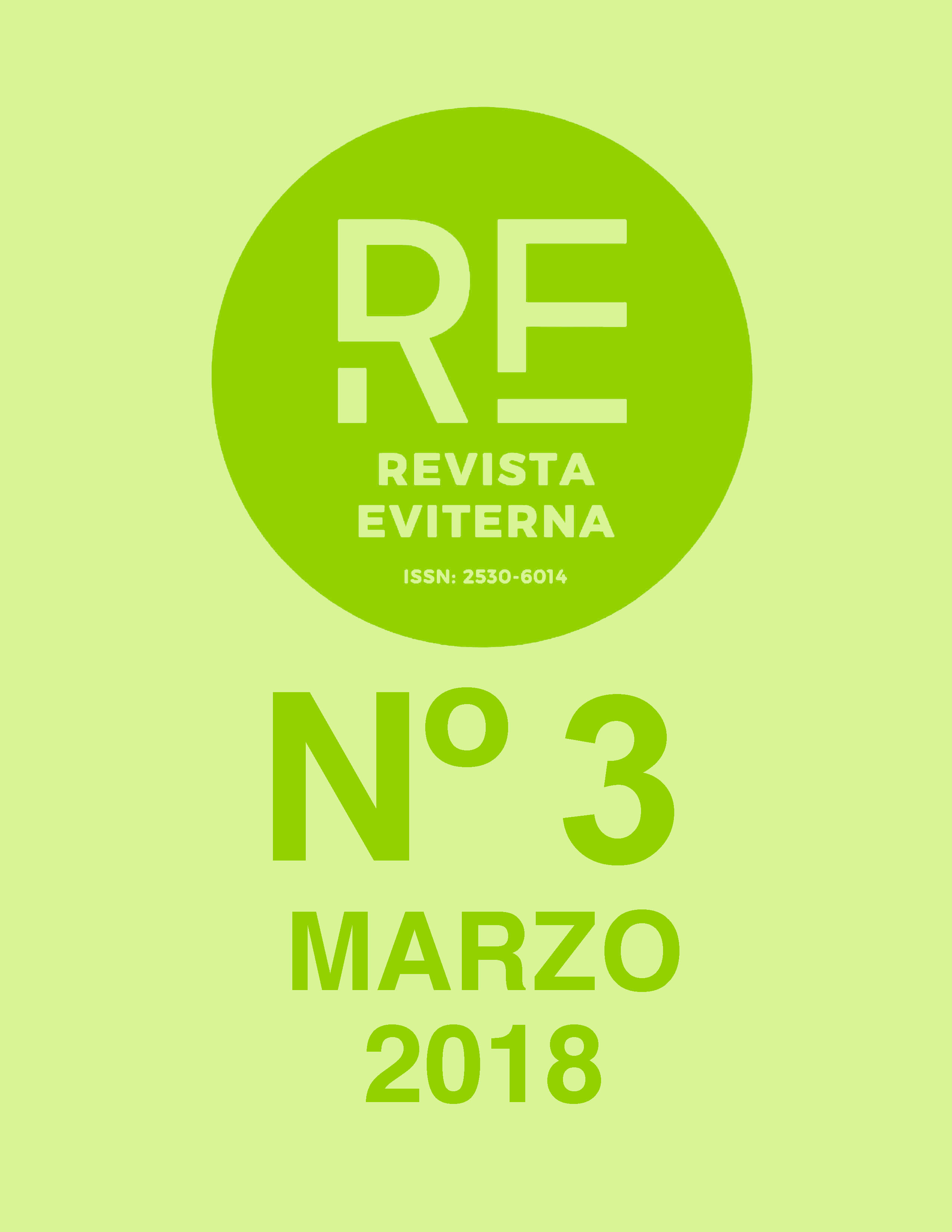Sculpture and urban environment: the consolidation of myth in the city of Valencia
DOI:
https://doi.org/10.24310/Eviternare.v0i3.8178Keywords:
public sculpture, Valencia, urbanism, myth, urban environmentAbstract
The main objective of this article is to show the link between public sculpture and its urban and architectural environment. And how through them the collective imaginary of citizens is established and defined. Through the study of four sculptures located in different locations in the city of Valencia, a reading of the work as a whole will be carried out, including the urban context that houses it.
Downloads
Metrics
Publication Facts
Reviewer profiles N/A
Author statements
Indexed in
-
—
- Academic society
- N/A
- Publisher
- Universidad de Málaga
References
ALMELA i VIVES, F. (1989). El Marqués de Campo. Capdavanter de la burguesía valenciana (1814-1889). Ajuntament de València: Valencia
APARICI NAVARRO, Miguel (2005). Guía del Convento de Santo Domingo, Antigua Capitanía General y sede actual de la Fuerza de Maniobra. Bancaja: Valencia
BAYDAL SALA, Vicent (2011), “A figura de Francesc de Vinatea no Reino de Valência. Da crónica real aos documentos archivísticos (1331-1332), Mirabilia: Revista Electrônica de História Antiga e Medieval, pp. 214-237
CARDELLS MARTÍ, Francisco Abelardo (2014), “La Valencia bajomedieval y su integración espacial: percepción del área, dimensión comunitaria y representación simbólica del término”, en Mundos medievales. Espacios, sociedades y poder, Vol II, pp. 1137-1148
CARDELLS MARTÍ, Francisco Abelardo y GIL SABIO, Noelia (2016), “Referentes históricos en la escultura pública”, en CHAVES MARTÍN, Miguel –Ángel (Ed.) (2016). Ciudad y artes visuales, Grupo de Investigación Arte, Arquitectura y Comunicación en la Ciudad Contemporánea, Universidad Complutense: Madrid, pp. 151-160
CORBÍN FERRER, Juan-Luis (1996). El ensanche noble de Valencia: entre Colón y Gran Vía Marqués del Turia. Federico Domenech: Valencia
DE LAS HERAS ESTEBAN, Elena (2003). La escultura pública en Valencia. Estudio y catálogo. Universitat de València, Servei de publicacions: Valencia
DE LECEA, Ignasi (2006). “Esculturas y espacio público en la ciudad de Barcelona”, en the w@terfront, nº 8, pp. 13 – 29. Recuperado de http://www.raco.cat/index.php/Waterfront/article/viewFile/217153/293972 (Consulta: 30/11/2017).
FORCADA COMINS, Vicente y DE GARGANTA, José M. (Dir.) (1956). Biografía y escritos de Sant Vicent Ferrer. Editorial Católica: Madrid
GIL SALINAS, Rafael (2003), “La escultura pública en Valencia y los artistas valencianos”, en LACARRA DUCAY, Carmen y GIMÉNEZ NAVARRO, Cristina (coord.), Historia y política a través de la escultura pública 1820-1920. Institución Fernando el Católico: Zaragoza, pp. 63-88
MARTINEZ RODA, Federico (1998). Valencia y las Valencias: su historia contemporánea (1800-1975). Universidad San Pablo CEU: Valencia
MERLO FUERTES, José Luis (2014), “Luis Albert y los primeros planes urbanísticos de la Diputación de Valencia”, VCL arquitectura, volumen 1(2), pp. 63-88
MESTRE MARTÍ, María (2011). Viena en la arquitectura modernista de Valencia. Influencias del Jugendstil Vienés en el Modernismo de Valencia. Editorial Universitat Politècnica de València: Valencia
MONTOLIU SOLER, Violeta (2002). Monumentos conmemorativos de Valencia, memoria esculpida de una ciudad: 1875-1936. Real Academia de Cultura Valenciana: Valencia
MORANT, Ana María (2015), “Un coleccionista desconocido en la corte de Alfonso XII: el Marqués de Campo”, Matèria, nº 9, pp. 115-127
NAVARRO SORNI, Miguel (2016), “San Vicente Mártir en su contexto histórico y en las homilías de San Agustín desde una hermenéutica Fe Razón”, Fides et Ratio nº 1, pp. 131-146
PALOMERO GONZÁLEZ, José Antonio y ALVARIÑO SERRA, Patricia (2016), “La importancia de higienismo y la potabilización del agua en la ciudad de Valencia”, Investigaciones Geográficas, nº 65, enero-junio, pp. 45-55
PANACH, Víctor y CEBRIÁN, J. (2017), “La configuración de la Iglesia Valentina desde el martirio de san Vicente (304) hasta el Concilio Valentino (546) en tiempos de Justiniano”, en CARDELLS, F. A. (Coord). Espiritualidad y territorio. UCV: Valencia, pp. 17-28
REVISTA DE ESCULTURA PÚBLICA ESCULTURA URBANA. Recuperado de http://www.esculturaurbana.com (Consulta:17/11/2017). ISSN 1988-5954
ROCA TRAVER, Francisco (2003). Alfonso II el Benigno, rey de Valencia. Vol. 6 de Biografías Valencianas, Diputación de Valencia: Valencia
TABERNER PASTOR, Francisco (2013), “Arquitectura y desarrollo urbano”, en Notas sobre el Ensanche de Valencia de 1884, nº 13 de Arte Valenciano, Volumen XCIV, pp. 181-200
VICIANO NAVARRO, Pau (1993), “Entre l’erudició i e pamflet polític: la figura de Francesc Vinatea en la societat valenciana”, Revista d’història medieval, 4, pp. 263-274.
ZARAGOZÁ CATALÁN, Arturo (1995), “Antiguo Convento de Santo Domingo”. Direcció General de Patrimoni Artístic: Valencia en ZARAGOZÁ CATALÁN, Arturo (1995), Valencia, Arquitectura Religiosa. Tomo X, en (1995) Monumentos de la Comunidad Valenciana. Direcció General de Patrimoni Artístic: Valencia
Downloads
Published
How to Cite
Issue
Section
License
All the contents published in Revista Eviterna are subject to the Creative Commons Reconocimento-NoComercia-Compartirigual 4.0 license, the full text of which can be found at <http://creativecommons.org/licenses/by-nc-sa/4.0>
They may be copied, used, disseminated, transmitted and publicly exposed, provided that:
The authorship and original source of your publication (Journal, editorial and URL of the work) are cited.
They are not used for commercial purposes.
The existence and specifications of this use license are mentioned.

Copyright is of two kinds: moral rights and patrimonial rights. Moral rights are perpetual, inalienable, inalienable, inalienable, inalienable and imprescriptible prerogatives.
In accordance with copyright legislation, Revista Eviterna recognizes and respects the moral rights of the authors, as well as the ownership of the economic right, which will be transferred to the University of Malaga for dissemination in open access.
The economic rights refer to the benefits obtained by the use or disclosure of the works. Revista Eviterna is published in open access and is exclusively authorized to carry out or authorize by any means the use, distribution, disclosure, reproduction, adaptation, translation or transformation of the work.
It is the responsibility of the authors to obtain the necessary permissions of the images that are subject to copyright.







12.png)



